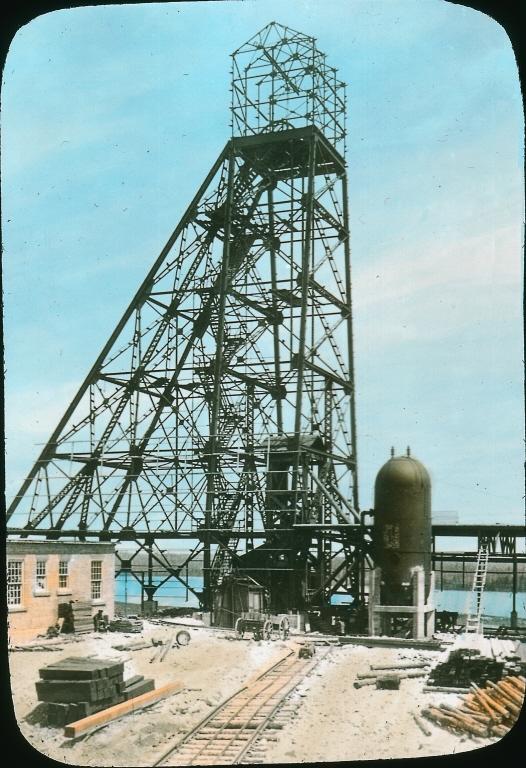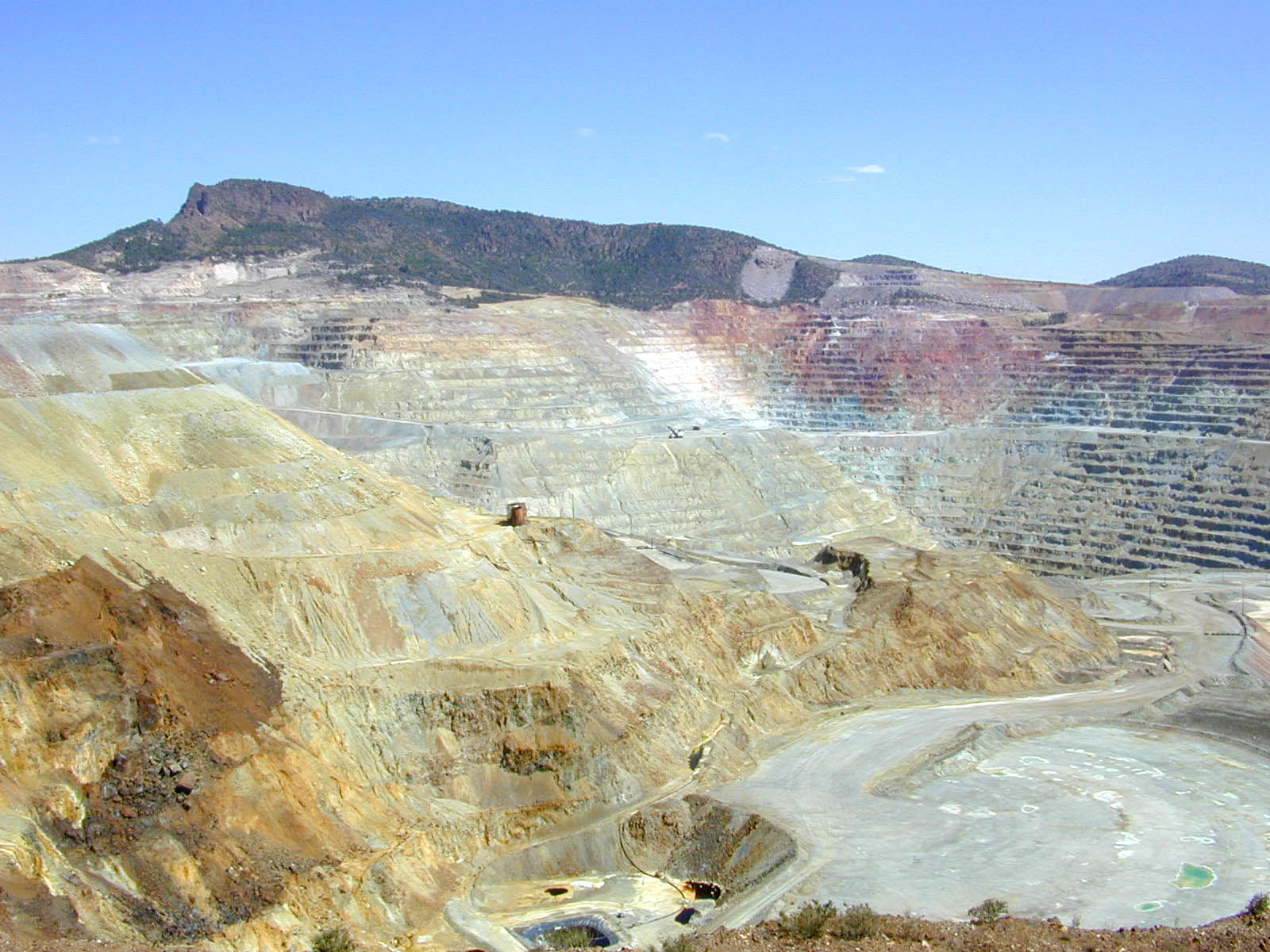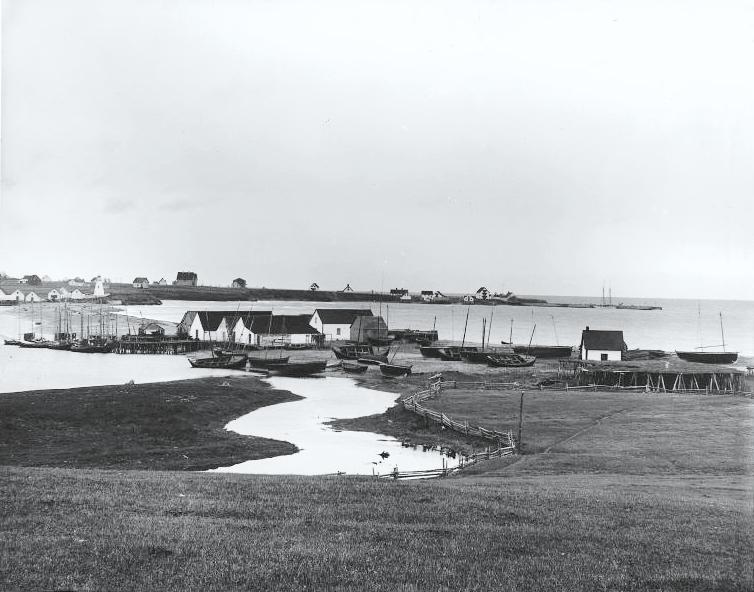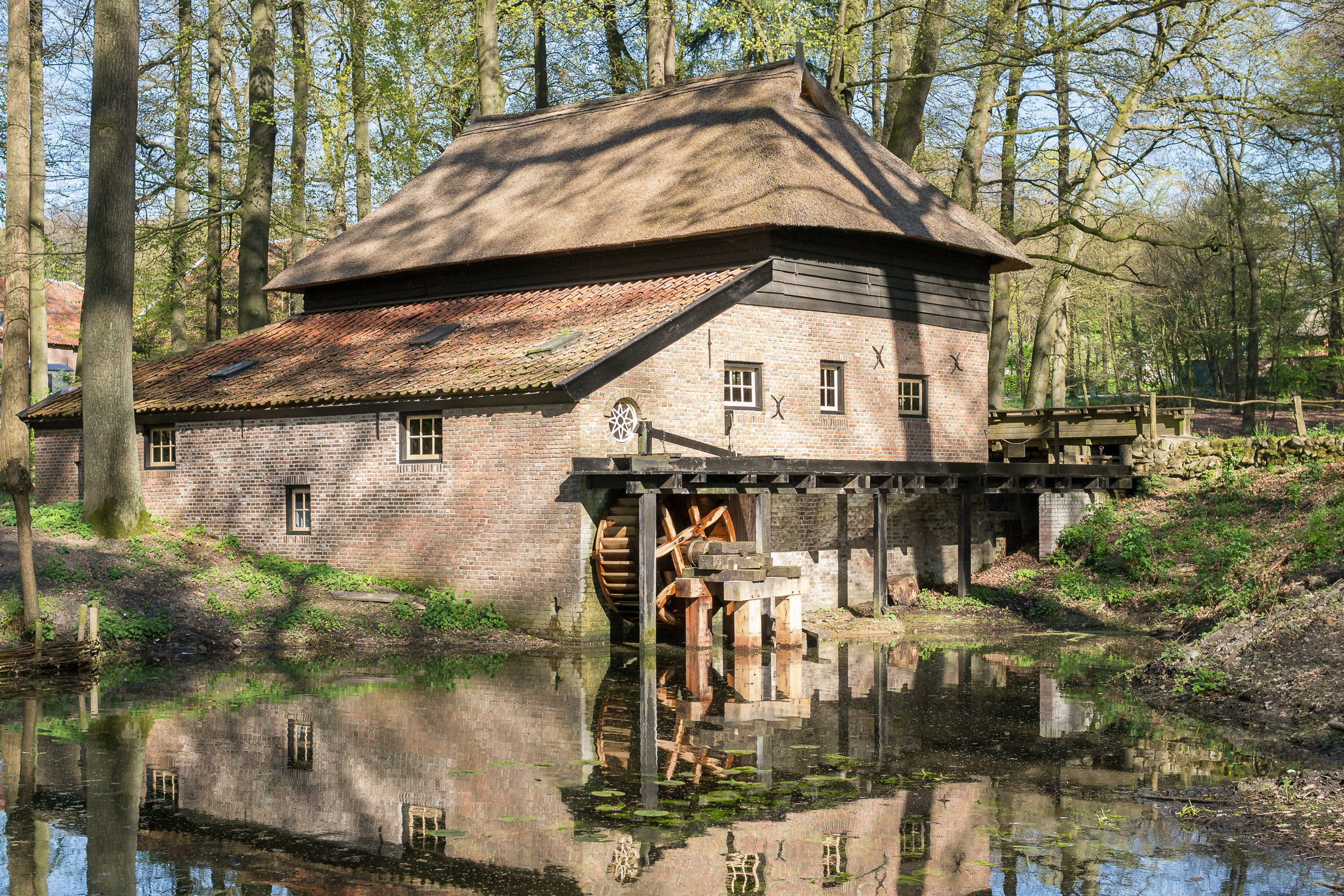|
Société De Chemin De Fer De La Gaspésie
The Société du chemin de fer de la Gaspésie (in English, the Gaspésie Railway Society) is a Canadian short line railway located in eastern Quebec operating of track from its interchange with Canadian National Railway (CN) at Matapédia in the west to the end of the line at Gaspé in the east, along the south coast of the Gaspé Peninsula. Ownership SFG is a non-profit company owned by the following four regional county municipalities (MRCs) which the rail line serves: * Avignon Regional County Municipality * Bonaventure Regional County Municipality * Le Rocher-Percé Regional County Municipality * La Côte-de-Gaspé Regional County Municipality In May 2015, the Gaspesie railway infrastructure was purchased by the Government of Quebec. SFG continues to offer freight service on the line, with customers located in Nouvelle and New Richmond. SFG currently operates one regular freight train (565) which operates 5–6 days a week, interchanging woodchips and lumber with C ... [...More Info...] [...Related Items...] OR: [Wikipedia] [Google] [Baidu] |
New Richmond, Quebec
New Richmond is an incorporated municipality in Quebec, Canada, situated on the southern coast of the Gaspé Peninsula between the municipalities of Maria and Caplan. New Richmond is bounded on the west by the Grand Cascapedia River. The Little Cascapedia runs to the east of the town proper. In addition to New Richmond itself, the town's territory also includes the communities of Black Cape and Saint-Edgar. History The first European settlers arrived from Scotland in 1755. The first arrivals were the Duthie brothers, George and John Duthie and their families. Their descendants still reside in the area today. It is one of the very few remaining municipalities on the Gaspé which still has a relatively large English-speaking population. It was originally a centre of farming, logging, and shipbuilding. Industry The town experienced considerable growth in the 1960s with the development of a linerboard paper mill by Bathurst paper, which became Consolidated Bathurst and after a ... [...More Info...] [...Related Items...] OR: [Wikipedia] [Google] [Baidu] |
Diesel Engine
The diesel engine, named after Rudolf Diesel, is an internal combustion engine in which ignition of the fuel is caused by the elevated temperature of the air in the cylinder due to mechanical compression; thus, the diesel engine is a so-called compression-ignition engine (CI engine). This contrasts with engines using spark plug-ignition of the air-fuel mixture, such as a petrol engine (gasoline engine) or a gas engine (using a gaseous fuel like natural gas or liquefied petroleum gas). Diesel engines work by compressing only air, or air plus residual combustion gases from the exhaust (known as exhaust gas recirculation (EGR)). Air is inducted into the chamber during the intake stroke, and compressed during the compression stroke. This increases the air temperature inside the cylinder to such a high degree that atomised diesel fuel injected into the combustion chamber ignites. With the fuel being injected into the air just before combustion, the dispersion of the fuel is une ... [...More Info...] [...Related Items...] OR: [Wikipedia] [Google] [Baidu] |
Copper
Copper is a chemical element with the symbol Cu (from la, cuprum) and atomic number 29. It is a soft, malleable, and ductile metal with very high thermal and electrical conductivity. A freshly exposed surface of pure copper has a pinkish-orange color. Copper is used as a conductor of heat and electricity, as a building material, and as a constituent of various metal alloys, such as sterling silver used in jewelry, cupronickel used to make marine hardware and coins, and constantan used in strain gauges and thermocouples for temperature measurement. Copper is one of the few metals that can occur in nature in a directly usable metallic form ( native metals). This led to very early human use in several regions, from circa 8000 BC. Thousands of years later, it was the first metal to be smelted from sulfide ores, circa 5000 BC; the first metal to be cast into a shape in a mold, c. 4000 BC; and the first metal to be purposely alloyed with another metal, tin, to create ... [...More Info...] [...Related Items...] OR: [Wikipedia] [Google] [Baidu] |
Noranda (mining Company)
Noranda Inc. was a mining and metallurgy company originally from Rouyn-Noranda, Quebec, Canada. It was listed on the TSX under the symbol NRD.LV. After eventually acquiring a large interest in rival mining company Falconbridge, it merged with that company in 2005. The combined company continued under the name Falconbridge Limited, ending the Noranda name. Only one year later in 2006 Falconbridge was acquired by the Swiss-based mining company Xstrata. On 2 May 2013 ownership of Xstrata was fully acquired by mining behemoth Glencore. History and operations Noranda was incorporated in 1922 as Noranda Mines under the leadership of James Y. Murdoch to exploit the Horne deposit, discovered by Edmond Henry Horne on mineral claims he staked in 1920. Extraction of copper began on 17 December 1927. Although extraction was originally predicted to last for only three years, additional reserves (the gigantic "Giant H Orebody") were quickly discovered; the mine would form the backbone of Nor ... [...More Info...] [...Related Items...] OR: [Wikipedia] [Google] [Baidu] |
List Of Copper Ores
Following is a list of minerals that serve as copper ores in the copper mining process:Samans, Carl H. ''Engineering Metals and their Alloys'' MacMillan 1949 References {{DEFAULTSORT:Copper ores Copper ores Mining-related lists ... [...More Info...] [...Related Items...] OR: [Wikipedia] [Google] [Baidu] |
Murdochville, Quebec
Murdochville is a town in Quebec, Canada, one of only a few inland communities on the Gaspé Peninsula. Its population (as of 2016) is 651. Murdochville is located along Quebec Route 198 in the geographic township of Holland, south of L'Anse-Pleureuse and west of Gaspé. It is above sea level and surrounded by high mountains. History In 1921, copper ore was discovered in the area by the Miller brothers: Alfred, Sydney, Frederick, Angus and Theophilus. However, it was not until 1950 that Noranda Mines actually began mining. The mining town was set up and named after James Y. Murdoch, owner of the mine and first president of Noranda. In 1953, the town was incorporated. The mining operation in the town was comparatively large, starting with mining the raw ore and finishing with an end product of pure copper anode. In the 1970s, the mining operation in Murdochville was large enough to support a population of 5,000 inhabitants. A number of large union battles in Murdochville ... [...More Info...] [...Related Items...] OR: [Wikipedia] [Google] [Baidu] |
Smelting
Smelting is a process of applying heat to ore, to extract a base metal. It is a form of extractive metallurgy. It is used to extract many metals from their ores, including silver, iron, copper, and other base metals. Smelting uses heat and a chemical reducing agent to decompose the ore, driving off other elements as gases or slag and leaving the metal base behind. The reducing agent is commonly a fossil fuel source of carbon, such as coke—or, in earlier times, charcoal. The oxygen in the ore binds to carbon at high temperatures due to the lower potential energy of the bonds in carbon dioxide (). Smelting most prominently takes place in a blast furnace to produce pig iron, which is converted into steel. The carbon source acts as a chemical reactant to remove oxygen from the ore, yielding the purified metal element as a product. The carbon source is oxidized in two stages. First, the carbon (C) combusts with oxygen (O2) in the air to produce carbon monoxide (CO). Second, the ... [...More Info...] [...Related Items...] OR: [Wikipedia] [Google] [Baidu] |
Copper Extraction Techniques
Copper extraction refers to the methods used to obtain copper from its ores. The conversion of copper consists of a series of physical and electrochemical processes. Methods have evolved and vary with country depending on the ore source, local environmental regulations, and other factors. As in all mining operations, the ore must usually be beneficiated (concentrated). The processing techniques depend on the nature of the ore. If the ore is primarily sulfide copper minerals (such as chalcopyrite), the ore is crushed and ground to liberate the valuable minerals from the waste ('gangue') minerals. It is then concentrated using mineral flotation. The concentrate is typically sold to distant smelters, although some large mines have smelters located nearby. Such colocation of mines and smelters was more typical in the 19th and early 20th centuries, when smaller smelters could be economic. The sulfide concentrates are typically smelted in such furnaces as the Outokumpu or Inc ... [...More Info...] [...Related Items...] OR: [Wikipedia] [Google] [Baidu] |
Chandler, Quebec
Chandler is a town in the Gaspésie–Îles-de-la-Madeleine region of Quebec, Canada. It is the second-most populous town on the Gaspé Peninsula after the Town of Gaspé. It was known as Pabos between June 27, 2001 and May 4, 2002. The city is the birthplace of NHL player Mathieu Garon, Quebec politician Joseph-Léonard Duguay, singer "La Bolduc" (Mary Rose Anna Travers), singer and actor Flora Gionest-Roussy and world curling champion John Kawaja. Chandler's major industries include fishing and tourism. In addition to Chandler itself, the town's territory also includes the communities of Newport, Grand-Pabos-Ouest, Pabos, Pabos Mills, and Saint-François-de-Pabos. History The area was first settled in 1729, making it one of the oldest places on the Gaspé coast. It was known over time as Paboc, Pabo, Pabok, Pabeau, and Pas-bos. In 1815, the final spelling of Pabos was assigned in the ''Description topographique de la province du Bas Canada'' (Topographical Description of th ... [...More Info...] [...Related Items...] OR: [Wikipedia] [Google] [Baidu] |
Paper Mill
A paper mill is a factory devoted to making paper from vegetable fibres such as wood pulp, old rags, and other ingredients. Prior to the invention and adoption of the Fourdrinier machine and other types of paper machine that use an endless belt, all paper in a paper mill was made by hand, one sheet at a time, by specialized laborers. History Historical investigations into the origin of the paper mill are complicated by differing definitions and loose terminology from modern authors: Many modern scholars use the term to refer indiscriminately to all kinds of mills, whether powered by humans, by animals or by water. Their propensity to refer to any ancient paper manufacturing center as a "mill", without further specifying its exact power source, has increased the difficulty of identifying the particularly efficient and historically important water-powered type. Human and animal-powered mills The use of human and animal powered mills was known to Muslim and Chinese paperma ... [...More Info...] [...Related Items...] OR: [Wikipedia] [Google] [Baidu] |
Pulp Mill
A pulp mill is a manufacturing facility that converts wood chips or other plant fiber sources into a thick fiber board which can be shipped to a paper mill for further processing. Pulp can be manufactured using mechanical, semi-chemical, or fully chemical methods ( kraft and sulfite processes). The finished product may be either bleached or non-bleached, depending on the customer requirements. Wood and other plant materials used to make pulp contain three main components (apart from water): cellulose fibres (desired for papermaking), lignin (a three-dimensional polymer that binds the cellulose fibres together) and hemicelluloses, (shorter branched carbohydrate polymers). The aim of pulping is to break down the bulk structure of the fiber source, be it chips, stems or other plant parts, into the constituent fibers. Chemical pulping achieves this by degrading the lignin and hemicellulose into small, water-soluble molecules that can be washed away from the cellulose fibers with ... [...More Info...] [...Related Items...] OR: [Wikipedia] [Google] [Baidu] |
Wye (rail)
In railroad structures, and rail terminology, a wye (like the'' 'Y' ''glyph) or triangular junction (often shortened to just "triangle") is a triangular joining arrangement of three rail lines with a railroad switch (set of points) at each corner connecting to each incoming line. A turning wye is a specific case. Where two rail lines join, or in a joint between a railroad's mainline and a spur, wyes can be used at a mainline rail junction to allow incoming trains the ability to travel in either direction, or in order to allow trains to pass from one line to the other line. Wyes can also be used for turning railway equipment, and generally cover less area than a balloon loop doing the same job, but at the cost of two additional sets of points to construct, then maintain. These turnings are accomplished by performing the railway equivalent of a three-point turn through successive junctions of the wye, the direction of travel and the relative orientation of a locomotive or rai ... [...More Info...] [...Related Items...] OR: [Wikipedia] [Google] [Baidu] |








